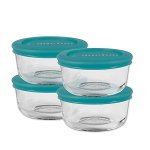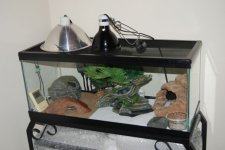skadi.skinks
New member
My leopard gecko Astara has been with me since the 22nd of February. She never had any troubles eating until about two weeks ago when she started to slow down.
This week, she has not eaten at all. She currently has almost no interest in prey items, and the only times she has shown interest, she either a) licks at the superworm in front of her or b) slowly pursues the cricket but does not attempt to strike. Last night, she was climbing like crazy all over the enclosure, and she isn't lethargic at all-- other than the climbing, she's been exactly like her usual self, aside from the appetite issue of course.
Basic Information
Gecko's name:
Astara
Morph:
Super Snow W/Y
Gender:
Female
Age:
18 months
Weight:
She is 65 grams, unless I somehow zeroed out the scale wrong in which case she is 55 grams. I don't want to stress her out again by putting her back in the cup to weigh her, but I will check again tomorrow once she's had time to chill out a bit.
Enclosure
Enclosure dimensions (length x width x height):
30x12x12 (20 gallon long)
Substrate provided:
Ceramic tile
Temperatures
What type and brand of thermometer:
Windbells Digital Thermometer
What is the ground temperature right on the substrate under the warm dry hide:
85.7
What is the air temperature on the warm end about 4 inches up from the ground:
~80
What is the air temperature on the cool end about 4 inches up from the ground:
~75
What device(s) are used to maintain the temperature:
Undertank heater with iPower thermostat
Feeding
Insects and worms, list type:
Crickets and superworms
Regular diet fed to the insects:
Finely ground Zoo Med Natural Adult Bearded Dragon Food
Regular diet fed to the worms:
Finely ground Zoo Med Natural Adult Bearded Dragon Food, oats (though that's also the bedding they came in)
How often do you feed your gecko?
and
Please list any supplements (with brand names) used. How are they given and how often?
I use the 18+ month schedule posted on the forums for her. I use ZooMed's Reptivite without D3 and Exo Terra's calcium with D3.
She also last pooped on March 10th, a little small but 100% healthy, with a white urate
I know this time of year does mean ovulation for females and that it can impact their appetite, but I'm starting to get concerned. Is she licking them for the calcium? Is she just being weird? I'm not sure what's going on.
This week, she has not eaten at all. She currently has almost no interest in prey items, and the only times she has shown interest, she either a) licks at the superworm in front of her or b) slowly pursues the cricket but does not attempt to strike. Last night, she was climbing like crazy all over the enclosure, and she isn't lethargic at all-- other than the climbing, she's been exactly like her usual self, aside from the appetite issue of course.
Basic Information
Gecko's name:
Astara
Morph:
Super Snow W/Y
Gender:
Female
Age:
18 months
Weight:
She is 65 grams, unless I somehow zeroed out the scale wrong in which case she is 55 grams. I don't want to stress her out again by putting her back in the cup to weigh her, but I will check again tomorrow once she's had time to chill out a bit.
Enclosure
Enclosure dimensions (length x width x height):
30x12x12 (20 gallon long)
Substrate provided:
Ceramic tile
Temperatures
What type and brand of thermometer:
Windbells Digital Thermometer
What is the ground temperature right on the substrate under the warm dry hide:
85.7
What is the air temperature on the warm end about 4 inches up from the ground:
~80
What is the air temperature on the cool end about 4 inches up from the ground:
~75
What device(s) are used to maintain the temperature:
Undertank heater with iPower thermostat
Feeding
Insects and worms, list type:
Crickets and superworms
Regular diet fed to the insects:
Finely ground Zoo Med Natural Adult Bearded Dragon Food
Regular diet fed to the worms:
Finely ground Zoo Med Natural Adult Bearded Dragon Food, oats (though that's also the bedding they came in)
How often do you feed your gecko?
and
Please list any supplements (with brand names) used. How are they given and how often?
I use the 18+ month schedule posted on the forums for her. I use ZooMed's Reptivite without D3 and Exo Terra's calcium with D3.
She also last pooped on March 10th, a little small but 100% healthy, with a white urate
I know this time of year does mean ovulation for females and that it can impact their appetite, but I'm starting to get concerned. Is she licking them for the calcium? Is she just being weird? I'm not sure what's going on.




